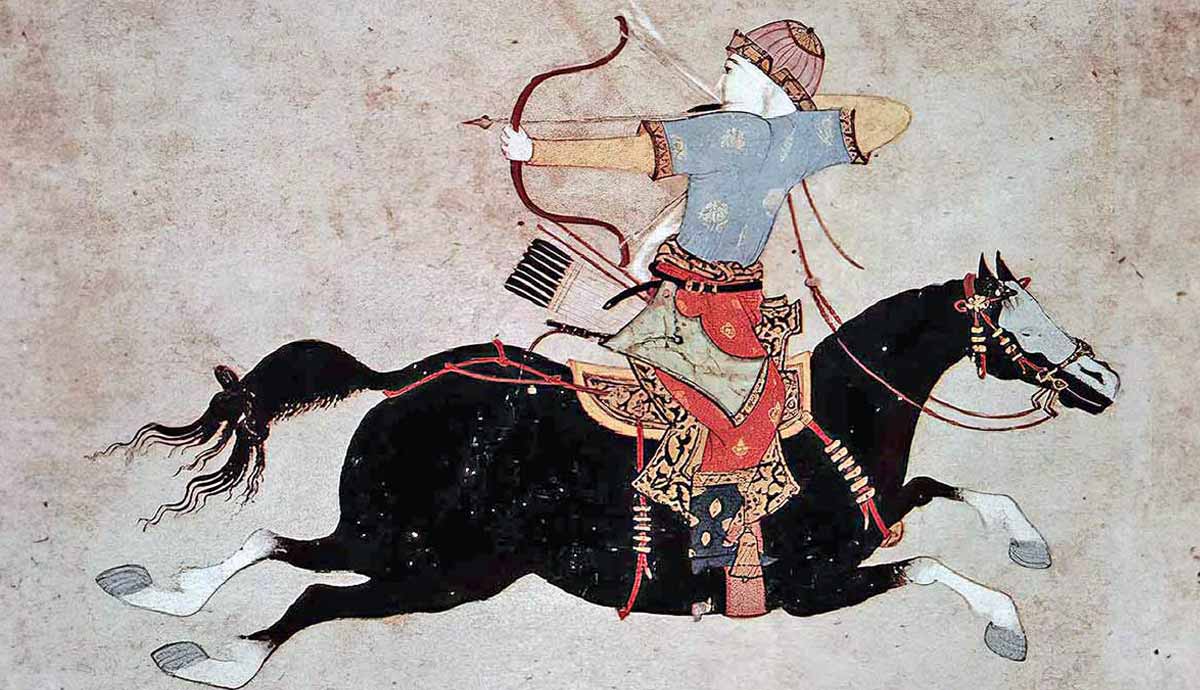Medieval Battles Where Archers Ruled the Field
Medieval battles were dominated by armored cavalry, but history reveals cases where archers were able to outsmart their rivals. Changing tactics only took them so far. New bow types, like the English longbow and the nomadic composite bow, increased the archers lethality. Longbows represented an equally powerful yet deadly weapon. These had a much faster rate of fire, power, and a range out to 200 yards. But longbows required years of training and good upper body strength, unfortunately.The composite bow became a primary missile weapon of many nomadic tribes, especially the Mongols. Made from several materials, including bone and sinew, these bows offered power and often even a better range than European bows. These weapons ruled the day in the following battles.The 1223 Battle of the Kalka RiverMounted Knight Source: Old Book ArtIn what would be foreshadowing, this battle introduced feudal forces and the Mongols. Both sides met on May 31, 1223, at the Kalka River (todays Ukraine) on the steppe. At this first-ever encounter, Genghis Khans Mongols probed east after defeating the nomadic Cumans. The Cumans asked their Rus allies for help. The Rus complied, calling in their feudal obligations to create a mixed infantry and cavalry force.Mongol Horse Archers Source: WikimediaAfter a brief skirmish, the Mongols retreated, pursued by the Rus coalition for nine days across the steppe. The Mongols used deadly volleys to weaken their opponents. At the Kalka River, the Rus cavalry stormed across to engage the Mongols. The remainder slogged far behind. The veteran Mongols cut the Rus off, annihilating them with archery, cutting down the lumbering knights. The Mongols then surrounded the infantry, grinding them down with constant barrages. Only a handful escaped.War of the Roses ArcheryThe Battle of Towton, by John Quarterly, circa 1878. Source: Wikimedia CommonsIn what would be the bloodiest fight in the War of the Roses, the 1461 Battle of Towton showed what superior archery plus tactics could do. The two sides, the Yorkists and Lancastrians, squared up during a snowstorm on March 29, 1461, at the village of Towton.The Yorkists placed the archers on the flanks with the wind behind them. Using the wind for better range, the Yorkists first volleyed into the Lancastrians. Stung, the Lancastrians shot back repeatedly against the wind, their arrows falling short. Snow and wind caused their miscalculation. The Yorkists advanced, grabbing fallen arrows to fire into Lancastrian lines.The Lancastrian lines, under a constant barrage, broke ranks and charged. With the Lancastrians hampered by snow, mud, and arrows, the Yorkist archers flanked their tired foes on both sides, constantly firing. With their cohesion lost, the Lancastrians broke and fled.Yorkist arrows slaughtered the retreating soldiers while others drowned. Estimates are that up to 20,000 Lancastrian soldiers died, again demonstrating the longbows terrible power and range.Archery in the Holy LandThe Battle of Hattin, by Matthew Paris, 13th century. Source: Cambridge UniversityThe Mamluks of Egypt, descended from nomadic Turkish tribes, made archery their primary martial skill. The European Crusaders learned this at the Battle of Hattin on July 4, 1187. This fight was the culmination of two months of skirmishing. Saladin, the Mamluk leader, led an army of 30,000 into Palestine, besieging one city to lure the Crusaders out.After a debate and some misgivings, the Crusader army marched to attack Saladin. During the march across arid plains, Saladins light cavalry harassed the Christians, firing arrows from a distance. The Crusaders camped on two hills called the Horns of Hattin for a tactical advantage. But the crafty Saladin slid past and surrounded his opponents.Saladins Mamluks Close the Trap Source: sina.comTo confuse and dishearten their ranks, the Mamluks set fire to any vegetation. Trapped under a hot sun, the Mamluk archers shot unremitting volleys. Any heavy cavalry charges met with such a hail of arrows that the attacks broke up. With their quicker mounts and better composite bows, the Mamluks danced out of range.In a final desperate move, the Crusaders tried to break out. This led to a collapse, including surrender or being overwhelmed. Saladins tactical use of archery played a significant role in defeating the Crusaders. Jerusalem would fall only months later.Longbows at FalkirkEnglish Longbow Example Source: PollyDotPixabayDuring this battle, the English longbow played a crucial role in blocking Scottish independence. English and Scottish forces clashed at Falkirk on July 22, 1298. The Scots used a schiltron formation (an infantry circle with pikes) to fend off the English cavalry. While good at keeping knights at bay, the tightly packed circles made for easy archery targets.As both sides took position, the English archers loosened volleys into the schiltrons. The arrow storm thinned the Scottish ranks, creating panic. Once done, the English knights charged, routing the Scots. Here, the English reversed tactics, using archery before a feudal charge.


